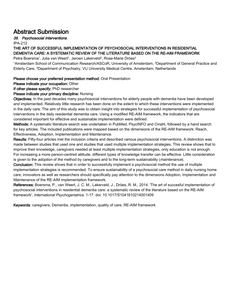Despite continuous efforts in various economies, amongst others in South-East Asia, the full potential of social entrepreneurship (SE) is difficult to realize (STEPup project comparative study findings). Challenges that need to be addressed include the lack of skilled employees, business understanding among founders, access to funding and infrastructure and a lack of social impact measurement. Higher education institutions (HEI) are often challenged with limited engagement, also in terms of student support of early entrepreneurial activity. This disbalance has also been observed in Thailand and Myanmar, with the Erasmus+ funded project STEPup (2020-2023) seeing an opportunity to create and strengthen innovative social entrepreneurship practices for disruptive business settings in the two participating countries. Research based on the review of scientific articles, the conduct of focus groups (n= 42 from 38 different external stakeholder organizations) and numerous interviews and creative sessions with stakeholders of the social entrepreneurship domain also revealed the necessity to act in a self-organizing and organic SE support system. This paper aims to present recommendations and strategic guidelines to increase access and opportunity for existing social enterprises and social entrepreneurs who are planning to create and sustain an SE ecosystem through the framework, support, expertise and structure of existing higher education institutions. In addition, Higher Education Institutions in Myanmar and Thailand would serve as a good practice case on how to design and develop resource hubs for social enterprise practitioners and engage stakeholders from all sectors to tackle social issues and promote awareness of the social enterprise sector’s potential.
MULTIFILE

Innovation is crucial for higher education to ensure high-quality curricula that address the changing needs of students, labor markets, and society as a whole. Substantial amounts of resources and enthusiasm are devoted to innovations, but often they do not yield the desired changes. This may be due to unworkable goals, too much complexity, and a lack of resources to institutionalize the innovation. In many cases, innovations end up being less sustainable than expected or hoped for. In the long term, the disappointing revenues of innovations hamper the ability of higher education to remain future proof. Against the background of this need to increase the success of educational innovations, our colleague Klaartje van Genugten has explored the literature on innovations to reveal mechanisms that contribute to the sustainability of innovations. Her findings are synthesized in this report. They are particularly meaningful for directors of education programs, curriculum committees, educational consultants, and policy makers, who are generally in charge of defining the scope and set up of innovations. Her report offers a comprehensive view and provides food for thought on how we can strive for future-proof and sustainable innovations. I therefore recommend reading this report.
DOCUMENT

Presentatie gegeven over de review in Brussel Objectives: In the past decades many psychosocial interventions for elderly people with dementia have been developed and implemented. Relatively little research has been done on the extent to which these interventions were implemented in the daily care. The aim of this study was to obtain insight into strategies for successful implementation of psychosocial interventions in the daily residential dementia care. Using a modified RE-AIM framework, the indicators that are considered important for effective and sustainable implementation were defined.
MULTIFILE
